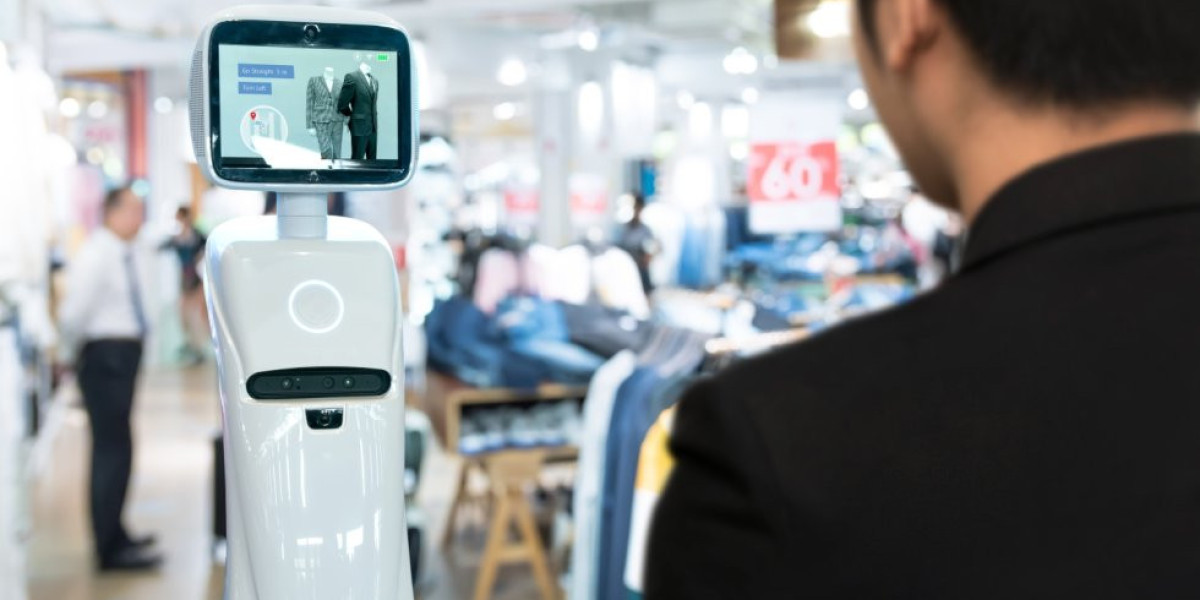Modern car dealerships manage millions of dollars’ worth of inventory, making them one of the most targeted business types for theft and vandalism. Vehicles, keys, catalytic converters, and expensive tools can attract intruders who exploit the cover of night or off-peak hours. Traditional security systems that rely on static cameras or alarms can record incidents, but they rarely prevent them in real time. That’s where real-time dealership surveillance technologies are transforming security operations.
Real-time surveillance uses a combination of smart cameras, artificial intelligence, cloud infrastructure, and trained human oversight to detect and respond instantly to suspicious activity. The result is a proactive, continuous layer of protection that enhances both safety and operational efficiency.
Why Dealerships Need Advanced Surveillance
Car dealerships face several security challenges that require a more advanced approach than typical retail environments. Large outdoor lots, high-value assets, and after-hours exposure make them vulnerable to a wide range of threats.
High-Value Assets at Risk
Dealerships often keep dozens or even hundreds of vehicles on display, each worth tens of thousands of dollars. Even a single theft can create massive financial losses, not to mention insurance complications and reputational harm.
After-Hours Exposure
Most thefts and acts of vandalism occur at night when staff are absent. Security guards and motion sensors can only cover so much ground, and criminals often exploit blind spots.
Expanding Threats
Beyond physical theft, dealerships are now dealing with digital threats such as unauthorized access to key programming systems or tampering with electronic locks. This mix of physical and digital vulnerabilities requires integrated, intelligent surveillance solutions.
The Core Technologies Behind Real-Time Surveillance
Real-time dealership surveillance systems rely on an ecosystem of technologies that work together to provide comprehensive monitoring and instant response.
1. High-Definition IP Cameras
Modern Internet Protocol (IP) cameras are the backbone of any effective surveillance system. They deliver crystal-clear video quality, allowing security operators to zoom in, identify faces, read license plates, and analyze suspicious behavior even in low-light conditions.
Features such as pan-tilt-zoom (PTZ) functionality enable full coverage of large lots, while wide dynamic range (WDR) ensures clear footage despite varying lighting conditions.
2. Artificial Intelligence and Video Analytics
AI has revolutionized dealership surveillance. Advanced algorithms analyze video feeds in real time, detecting patterns that indicate unusual activity—such as loitering, climbing fences, or moving vehicles after hours.
Machine learning enables the system to distinguish between real threats and harmless events (like passing animals or wind-blown debris), reducing false alarms. Some systems even use object classification to recognize specific vehicle types or identify license plates.
3. Cloud-Based Infrastructure
Instead of relying solely on local servers, modern systems use cloud storage and processing. This allows for secure, remote access to footage and ensures data redundancy in case of hardware failure. Managers and security personnel can view live feeds from smartphones, tablets, or desktops from anywhere.
Cloud infrastructure also supports faster software updates, scalable storage, and easy integration with other business systems.
4. Real-Time Monitoring Centers
Technology alone isn’t enough—trained human oversight remains crucial. Monitoring centers staffed by security professionals watch live camera feeds around the clock.
When suspicious activity is detected, operators can issue live audio warnings, activate alarms, flash deterrent lights, or notify law enforcement within seconds. This combination of human judgment and technological precision makes real-time monitoring highly effective.
5. Two-Way Audio Communication
Two-way speakers installed around dealership lots allow remote operators to communicate directly with trespassers. Hearing a real-time voice warning, such as “You are being recorded; authorities are on their way,” often causes intruders to flee immediately.
This immediate intervention not only prevents theft but also reduces property damage.
6. Smart Sensors and Motion Detectors
Modern surveillance systems are equipped with motion detection sensors that use infrared, microwave, or ultrasonic technology to identify movement even in complete darkness. These sensors trigger instant alerts to operators, prompting them to review live footage and act accordingly.
7. Data Analytics and Reporting Tools
Beyond security, the data collected by surveillance systems can be used to optimize dealership operations. Analytics can reveal traffic patterns, peak hours, and customer behaviors—information that can help managers improve layout, staffing, and service efficiency.
8. Secure Networking and Cyber Protection
Because these systems are connected to the internet, cybersecurity is essential. Encryption protocols, firewalls, and secure access management ensure that sensitive data cannot be intercepted or tampered with. Reliable vendors also provide multi-factor authentication and regular software updates to protect against evolving cyber threats.
How Real-Time Surveillance Improves Security
The combination of these technologies creates a powerful security ecosystem that offers several key advantages over traditional systems.
Instant Detection and Response
AI-based monitoring and real-time human oversight ensure that incidents are spotted and addressed immediately, often before losses occur.
Enhanced Deterrence
Visible cameras, loudspeakers, and deterrent lighting signal to potential intruders that the property is actively monitored, discouraging criminal behavior.
Reduced False Alarms
Unlike motion-based alarms that trigger frequently, AI-driven analytics filter out irrelevant movement, ensuring that alerts are meaningful and actionable.
Evidence Collection
High-quality video recordings serve as valuable evidence in investigations, helping identify suspects and verify insurance claims.
Continuous Protection
Because real-time surveillance operates 24/7, dealerships remain protected even when closed for holidays, weekends, or long off-hours.
The Role of Artificial Intelligence in Modern Surveillance
AI has shifted the focus of dealership security from reactive to predictive.
Predictive Threat Detection
AI models learn typical dealership activity patterns—such as delivery schedules or staff movements—and flag deviations that suggest a potential threat.
Behavioral Analysis
Systems can identify suspicious behaviors like repeated circling of the lot, lingering near restricted areas, or tampering with vehicles.
License Plate Recognition (LPR)
LPR technology helps track vehicle entries and exits, identifying unauthorized vehicles and maintaining an accurate log of activity.
Integration with Access Control
AI-enabled systems can be integrated with digital locks and gate systems, allowing remote control of access points and automated lockdown in emergencies.
Integrating Human Expertise with Technology
While technology provides the tools, human operators provide judgment. Professional monitoring personnel interpret AI alerts, verify incidents, and determine the best course of action.
This partnership between humans and machines ensures accuracy and reduces the likelihood of false positives. It also enables nuanced decision-making—for example, distinguishing between a customer retrieving a forgotten item and an actual trespasser.
Benefits Beyond Security
The technology powering real-time dealership surveillance extends its benefits beyond security alone.
Operational Efficiency
By analyzing foot traffic and vehicle movements, dealerships can adjust layout or staffing to improve customer experience.
Reduced Liability
Continuous monitoring ensures compliance with safety protocols, reducing risks associated with workplace accidents or customer disputes.
Insurance Advantages
Insurers often provide premium discounts for businesses that adopt advanced surveillance systems, recognizing the reduced likelihood of claims.
Reputation Management
Customers and employees alike value a secure environment. Demonstrating a commitment to safety builds trust and enhances the dealership’s reputation.
Future Trends in Dealership Surveillance Technology
The pace of technological innovation continues to accelerate. Emerging trends suggest even greater capabilities for real-time monitoring.
Edge Computing
Instead of sending all data to the cloud, edge computing processes information directly on-site, reducing latency and improving response times.
Integration with IoT Devices
Smart locks, lighting systems, and environmental sensors will increasingly work in sync with surveillance cameras to create fully automated security ecosystems.
Predictive Maintenance
AI-driven analytics can detect when cameras or sensors need servicing, ensuring consistent performance without downtime.
Drone Surveillance
In large dealership lots, autonomous drones may soon patrol perimeters, providing aerial visibility and immediate alerts in case of intrusion.
Implementing a Real-Time Surveillance System
To deploy an effective surveillance network, dealerships should follow a structured approach.
- Site Assessment: Identify vulnerable zones, including entrances, vehicle display areas, and service bays.
- Equipment Selection: Choose weather-resistant, high-resolution cameras with night vision and AI compatibility.
- Network Setup: Ensure reliable connectivity with secure routers and firewalls.
- Professional Monitoring Partnership: Collaborate with an experienced service provider capable of 24/7 oversight.
- Staff Training: Educate employees about system features, privacy protocols, and how to respond during alerts.
Conclusion
The technology behind real-time dealership surveillance represents a new era in security management. Combining artificial intelligence, cloud computing, and professional monitoring creates a responsive system that not only detects threats but actively prevents them.
For car dealerships, this means more than just avoiding losses—it means gaining peace of mind, operational insight, and long-term protection for valuable assets. As technology continues to evolve, real-time surveillance will remain the foundation of modern dealership security, offering the precision, reliability, and intelligence required to safeguard the automotive industry’s most important investments.
Frequently Asked Questions
How does AI improve dealership surveillance compared to older systems?
AI analyzes live video feeds to detect unusual activity instantly, reducing false alarms and allowing faster response compared to traditional motion sensors.
Can real-time surveillance work in low-light conditions?
Yes, modern IP cameras feature infrared and low-light imaging capabilities, providing clear visibility even at night.
Is cloud-based surveillance secure?
Reputable systems use strong encryption, multi-factor authentication, and secure data centers to protect against unauthorized access.
Do I still need on-site guards if I have real-time surveillance?
While not always necessary, some dealerships use a hybrid model—combining remote monitoring with limited on-site patrols for maximum protection.
What’s the main benefit of integrating AI with human monitoring?
AI speeds up detection, while human operators provide judgment and context, ensuring accuracy and effective decision-making.





